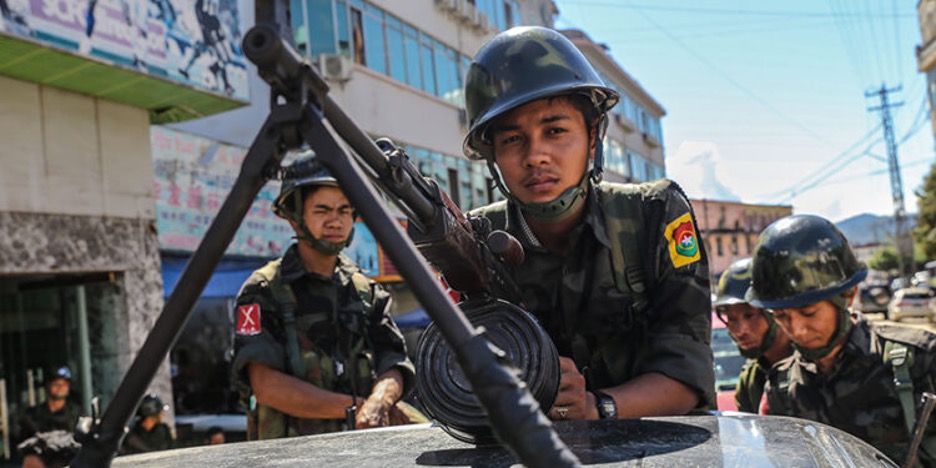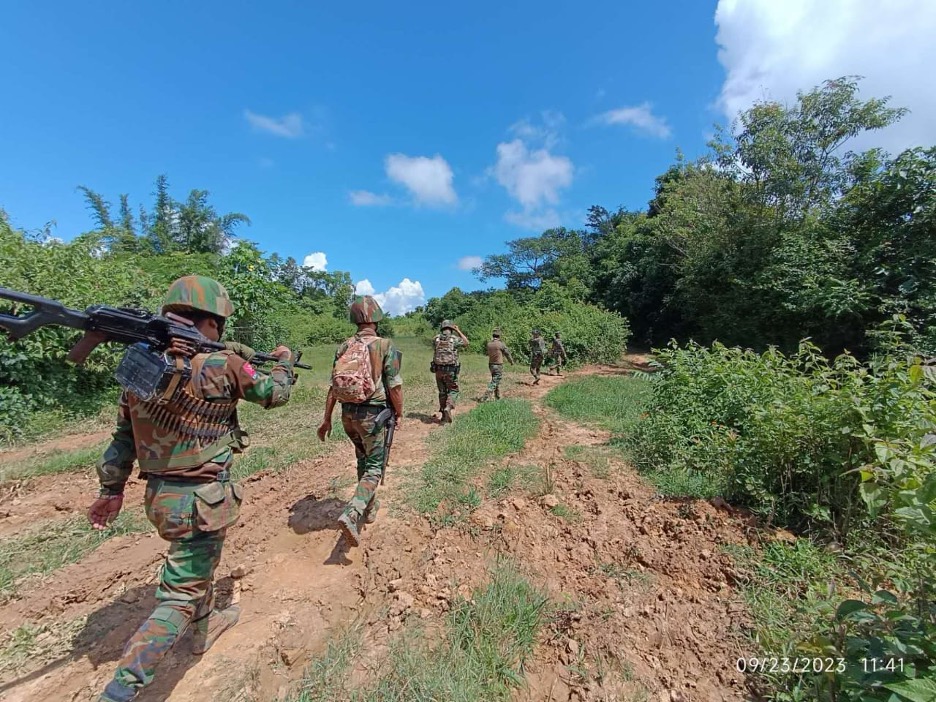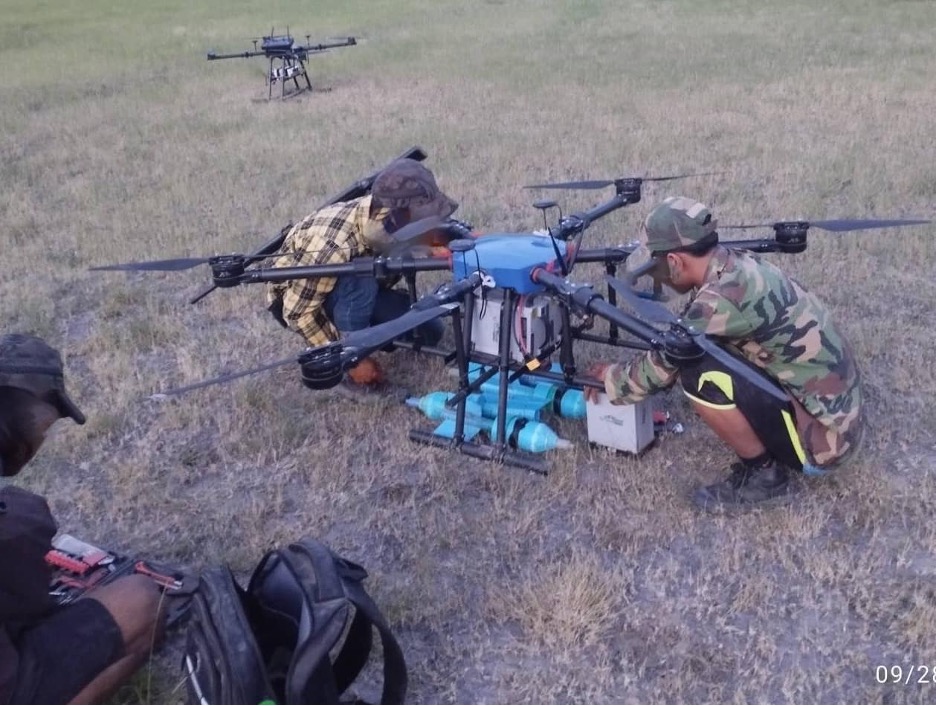The junta’s military increased attacks in Kachin and northern Shan states in September while switching to defensive tactics as it faced rising resistance across the country, but so far it has only lost bases and suffered heavy troop losses in both states.
It has been three months since the junta launched offensives against the Kachin Independence Army (KIA), one of the country’s most powerful ethnic armed groups (EAOs), as well as another strong EAO, the Ta’ang National Liberation Army (TNLA), in northern Shan State.
Analysts say the regime’s attacks on the armed wing of Kachin Independence Organization were intended to deter the KIA from assisting rising armed resistance against the military in neighboring Sagaing and Magwe regions.
The KIA has provided training for thousands of young anti-regime activists since the coup in February 2021.
It has also helped the People’s Defense Forces (PDFs) fight regime forces in Magwe and Sagaing regions. The PDFs are the armed wings of the civilian National Unity Government (NUG), which was formed by a group of elected lawmakers and members of parliament ousted in the coup.
Despite its ongoing atrocities, including incinerating hundreds of villages, and extrajudicial killings of civilians and resistance members, the junta has lost control of most of Sagaing Region and many townships in Magwe Region.
The TNLA, the armed wing of Palaung State Liberation Front, has also provided military training to ant-regime activists. It has been attacking regime targets in upper Mandalay Region and neighboring townships in northern Shan State alongside PDFs.
The TNLA has taken control of territory in Muse and Kutkai townships in northern Shan State, threatening the regime’s control of the Mandalay-Muse Highway, the main trade route to China.
Regime bogged down in Kachin State

Clashes erupted in early July in Kachin State when the regime sent in another 10 battalions. For three months they have been attempting to take control of territory around Nam San Yang Village, which is just 19 kilometers northwest of the KIA headquarters in Laiza Town.
A military analyst said that KIA’s response has been not to defend itself from a fixed position but to ambush junta troops and military convoys marching in two directions, from Kachin State’s capital of Myitkyina to Waingmaw and from Bhamo and Myothit. The ambushes have also prevented civilians from using Myitkyina-Bhamo Highway.
As regime troops attempted to threaten the KIA’s headquarters, they left troop shortages in other parts of Kachin State. The KIA has exploited this by attacking and occupying areas where the regime left gaps.
In September, over a dozen of clashes were reported in Katha, Sumprabum, Waingmaw, Tanai, Hpakant, Shwegu townships across the Kachin State and in nearby townships in Sagaing Region as well as on roads leading to Nam San Yang.
The KIA has also seized several junta outposts, inflicting heavy casualties on regime troops. In late September, it used rockets to attack military airbases at Myitkyina and also raided and occupied a military intelligence office in the Myanmar’s jade hub Hpakant.
On Thursday, regime forces took position on a mountain and reportedly used 120-mm artillery rounds to bomb the KIA’s headquarters near the Chinese border, hitting a base of the Arakan Army in the area and killing one of its captains.
Junta counter-offensive in northern Shan State

Fierce clashes continued to break out in northern Shan State as the regime deployed not only heavy air power but also more pro-military militia groups along with its troops in an attempt to retake control of ground held by the TNLA in Kutkai and Muse townships near the Chinese border.
Thousands of residents have been forced to flee their homes and indiscriminate shelling by junta troops caused civilian casualties, reports said.
In mid-September, regime boss Min Aung Hlaing wooed several militia groups in northern Shan State to fight the TNLA alongside regime troops. Later, the regime also provided firearms, rations and other allowances to the militia groups.
In the last week of September, the junta switched from clashes to airstrikes on TNLA territory, including one that used 500-pound bombs, in Muse and Kutkai townships.
At the same time, the TNLA and Mandalay PDFs are fighting regime forces in Kyaukme and Nawnghkio townships in northern Shan State and in Mogkok and Madaya townships in upper Mandalay Region.
In September alone, 42 clashes were reported between regime forces and the TNLA, the EAO said.
Resistance rising

With the exception of Rakhine State, where the Arakan Army and the junta agreed to a temporary ceasefire, the military regime has been facing relentless attacks from resistance groups and EAOs, including drone attacks and urban raids. These have inflicted heavy losses and threatened the regime across the country.
In early September, the military regime was frightened by resistance drone strikes targeting the Myawaddy District Administration Department office in Karen State’s Myawaddy Town. Five junta officials, including a junta-appointed district administrator and a military battalion commander, were killed in the drone strikes while 11 policemen, including a superintendent, were injured.
Another shock hit the regime in mid-September when a makeshift remote-controlled winged drone successfully dropped improvised bombs on Aye Lar military airbase adjacent Naypyitaw International Airport near the regime’s administrative capital.
Several resistance raids attempted to occupy regime towns in Magwe and Sagaing regions and Chin State in September.
A military analyst said fighting will intensify in the future as both sides have no starting point for political dialogue.

















